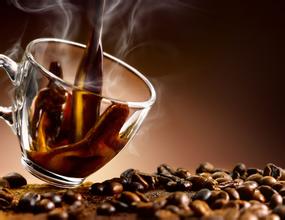Grading standard of raw coffee beans-- food safety standard of coffee beans
Harvest year: 2012-the year is for roasters' reference, so the year is usually not marked on the label of roasted ripe beans on the market.
In the coffee beans sold in the market, in order to reduce the trouble and identification burden of consumers, they generally do not make such complicated labels. There may be great differences in the flavor of coffee beans in different small producing areas and different years. Professional roasters will taste the raw coffee beans of the same year in different producing areas every year, and adjust the way of roasting and blending, so that consumers can get coffee with stable flavor and slight difference.
However, although the coffee taste indication described above is a common practice of coffee roasters, because the domestic coffee market is in its infancy, consumers can not taste different kinds of beans, so the coffee beans on the market are mixed, often with inferior quality, so consumers still need to buy high-grade coffee beans with a wide range of Ethiopian-Harald mocha (Ethiopia Harrar). Harald mocha has wine-like aromas, blueberry or grape flavors, thick palate, fresh and bright Yega Chevy, citrus or lemon peel aromas, and a thin palate.
However, some coffee beans have a list of names immediately after the name of a small producing area, which may be the name of a coffee farm, cooperative, or raw bean processing plant. For example, the long list of names of Guatemala, Antigua and Los Crop (Guatemala Antigua SHB- Finca Los Volcanes 12) tells us the following information:
Producing country: Guatemala (Guatemala)-Guatemala is a famous coffee producer in Central America.
Producing area: Antigua (Antigua)-this is the famous volcanic coffee producing area of the country.
Grading: extremely hard beans (SHB)-indicating that this coffee grows above 4500 feet above sea level

Important Notice :
前街咖啡 FrontStreet Coffee has moved to new addredd:
FrontStreet Coffee Address: 315,Donghua East Road,GuangZhou
Tel:020 38364473
- Prev

Coffee Grade Yunnan Tieka Coffee Flavor description method Manor characteristics and taste introduction
In recent years, with the rapid development of coffee industry, the planting area of coffee in Yunnan has expanded from more than 300,000 mu in 2008 to more than 1.4 million mu in 2013, and the output has increased from about 30,000 tons to more than 80,000 tons. It is estimated that in 2015, the acreage will reach 1.5 million mu and the yield will reach 100000 tons. The three earlier subspecies in the Arabica series are Blue Mountain BlueMountain, Iron pickup Typica and
- Next

Introduction to the process of harvesting, production and processing from fruit to coffee bean
Treatment method 2 washing treatment method-1 washing and separating coffee beans: put the picked fresh coffee fruit into a pool to wash, separate the ripe fruit from the leaves, sundries, immature fruit and overripe fruit floating on the surface-2 remove the peel and pulp: the washed fresh coffee fruit is put into the peeling machine to remove the peel washing treatment method-3
Related
- Guji coffee producing area of Guji, Ethiopia: Humbela, Shakiso, Wulaga
- What is the most expensive variety of Qiloso in BOP multi-variety group?
- How to store the coffee beans bought home?
- Why are Yemeni coffee beans so rare now?
- Ethiopian Sidamo all Red Fruit Sun Sun Santa Vini Coffee beans
- SOE is mostly sour? What does it mean? Is it a single bean? what's the difference between it and Italian blending?
- Is Italian coffee beans suitable for making hand-brewed coffee?
- How to choose coffee beans when making cold coffee? What kind of coffee beans are suitable for making cold coffee?
- Just entered the pit to make coffee, what kind of coffee beans should be chosen?
- Can only Japan buy real Blue Mountain Coffee? What are authentic Jamaican Blue Mountain coffee beans?

